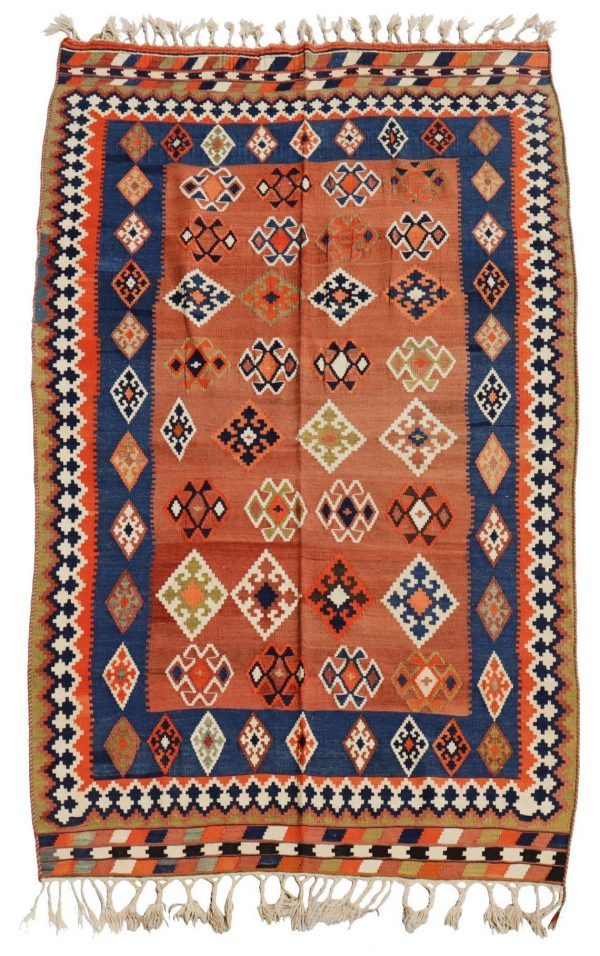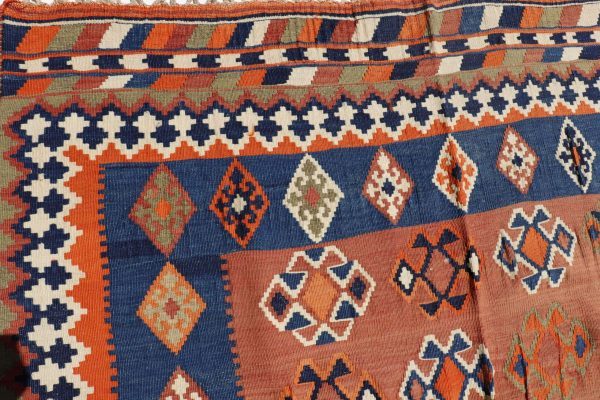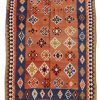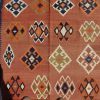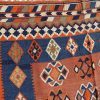Kilims or Gilims are flatwoven textiles with a woollen weft on a woollen, goat hair or cotton warp. There are many different techniques and designs. The weaver normally works within a tradition of techniques, motifs and designs specific to a particular area or ethnic group. The designs relate to her natural surroundings, protection, fertility and the harmony of family relationships. Each weaver adds something from her own creativity and sense of composition. Kilims are often woven as part of a marriage dowry and can be used to create many different objects like storage bags, horse-blankets, baby carriers, blankets and wall and floor coverings.
This vintage kilim was hand-woven on a simple loom by a village or nomadic weaver for her own use. Probably the weaver used wool from her own sheep. The wool was first cleaned, then hand-carded, hand-spun and finally dyed by hand, often using natural dye materials like roots, nuts, berries, fruits, flowers and plants. Kilims from the last quarter of the twentieth century mostly use synthetic dyes. This kilim would have taken many months to complete.
All our kilims selected in the country of origin and are professionally washed and restored before we import them directly from Iran, Turkey and Afghanistan. Natural patina and charming imperfections in design and colour (abrash) are highly valued characteristics of hand-woven kilims.
The central field motifs are similar, but each has been woven slightly differently. The central field of terracotta or salmon color, has nice shade changes called abrash.
Material: 100% hand-spun sheep wool
Size: 272×153 cms
Origin: Qashqai tribe of South Western Iran
Date of weaving: 1970s
In stock
kilim from the Qashqai tribe of South Western Iran. This vintage kilim was handwoven by a nomadic or village woman, using her own hand-spun and carded wool. The central field motifs are similar, but each has been woven slightly differently. The central field of terracotta or salmon color, has nice shade changes called abrash.
272×153 cms
1970s
| Weight | 6.9 kg |
|---|
